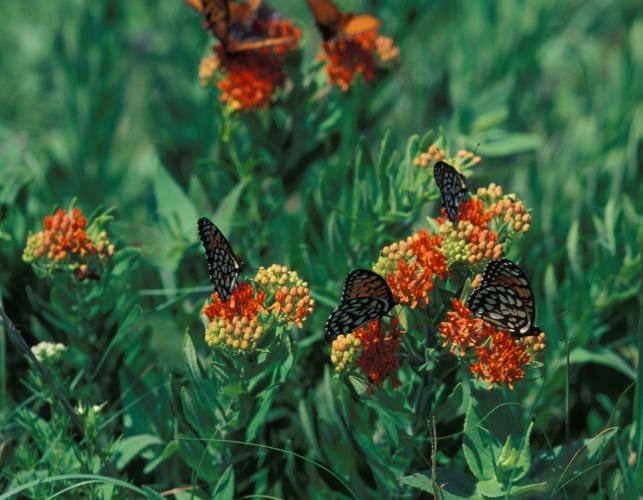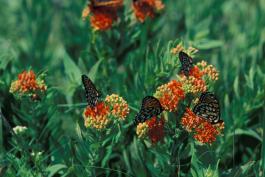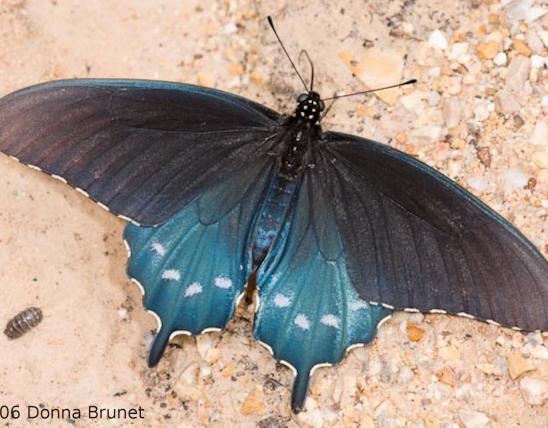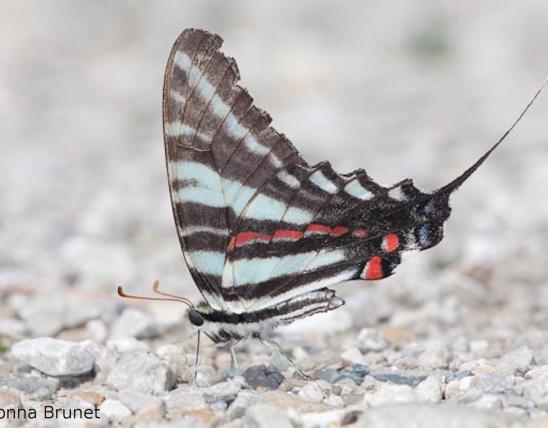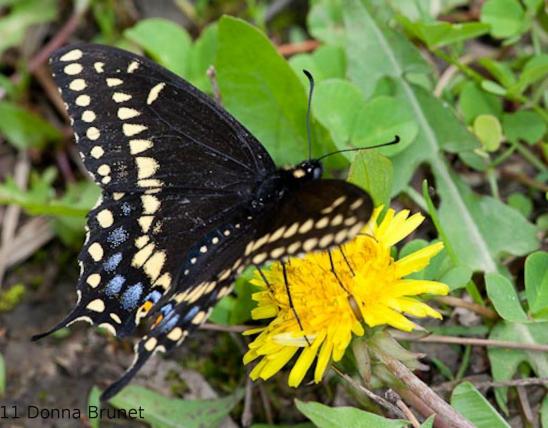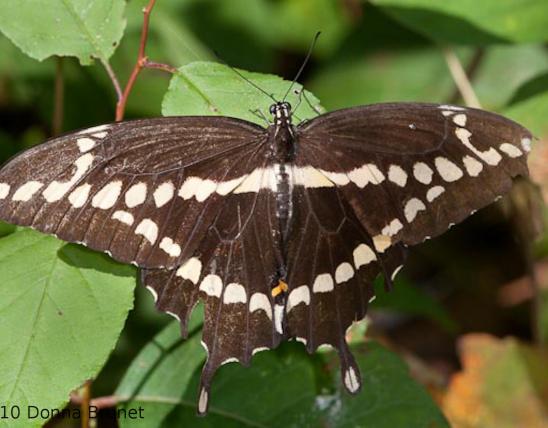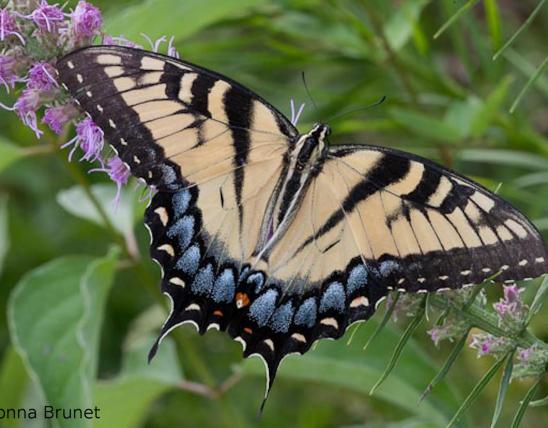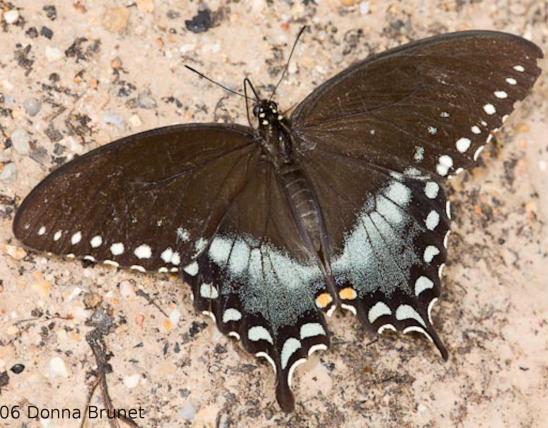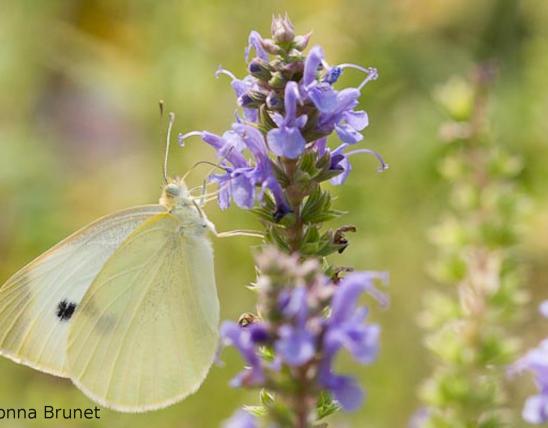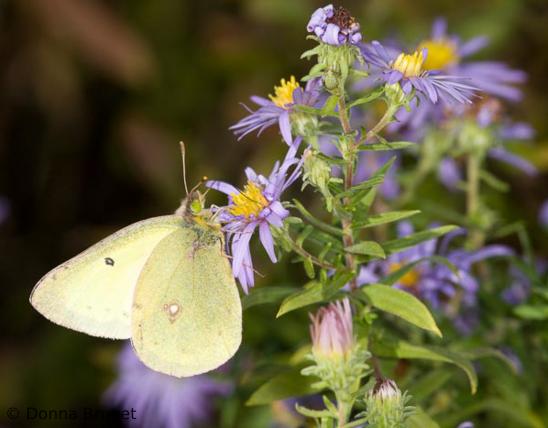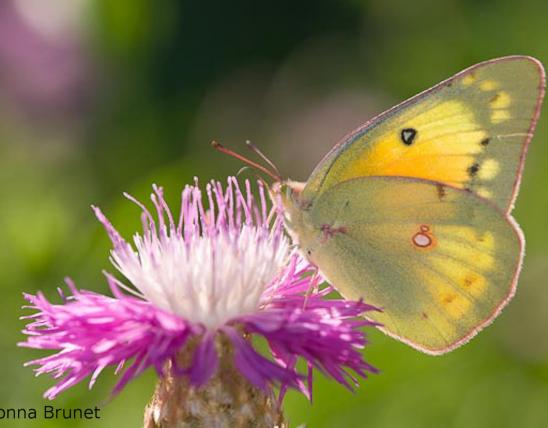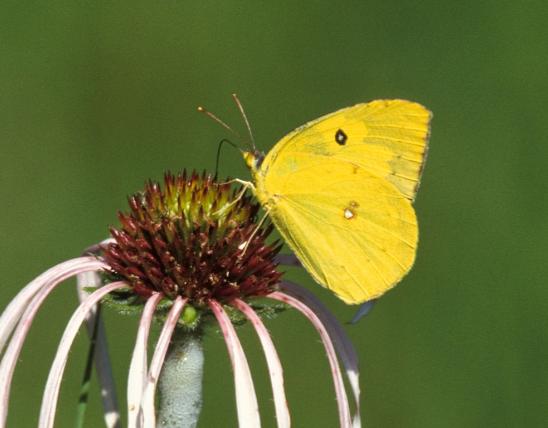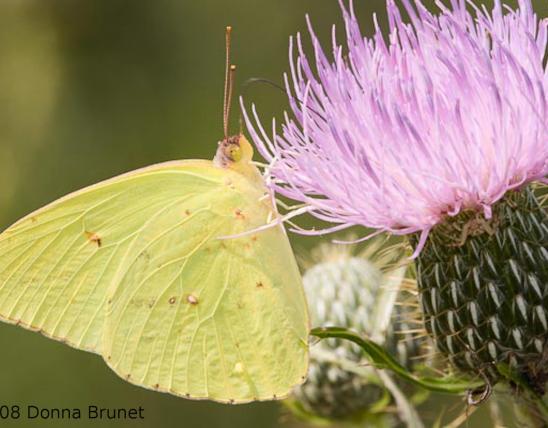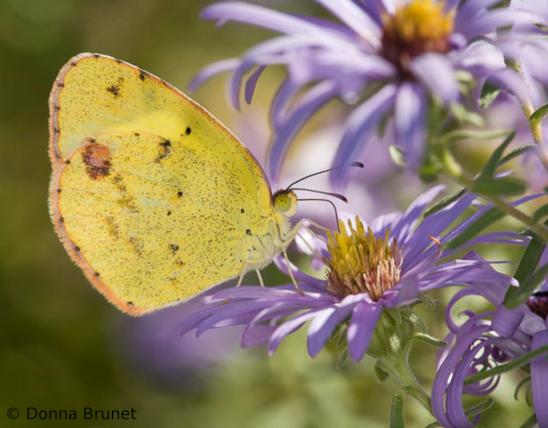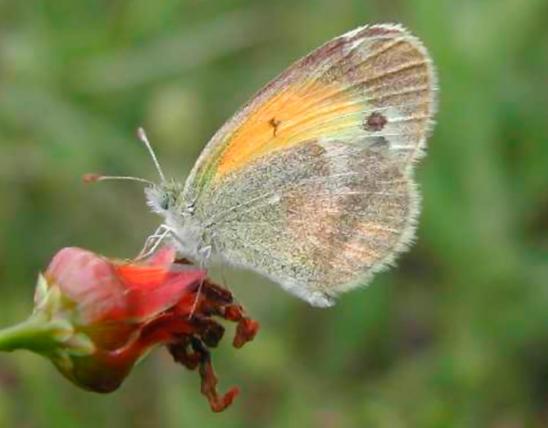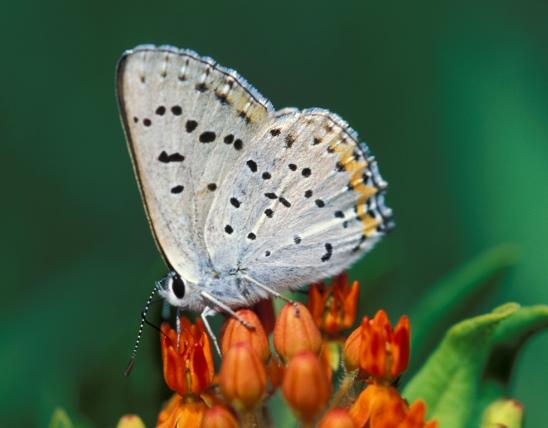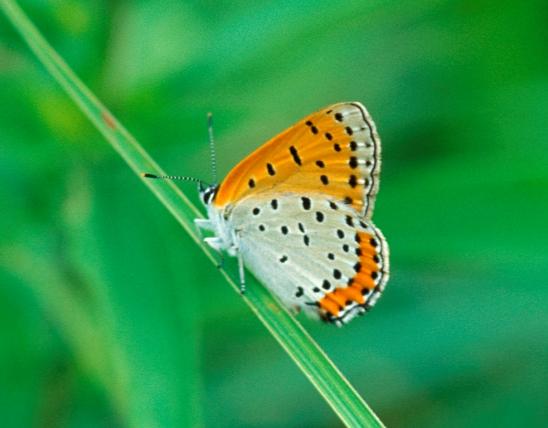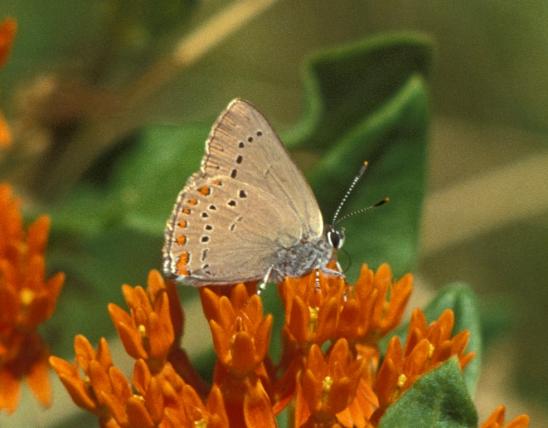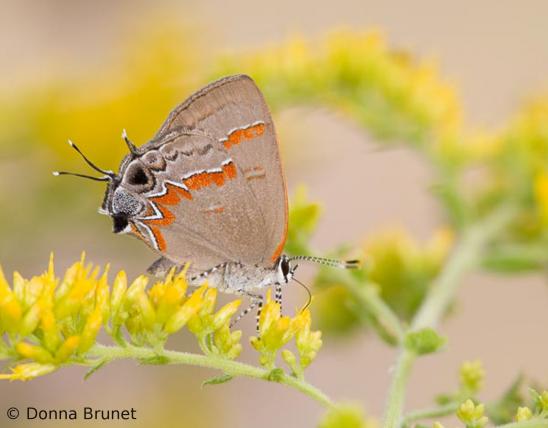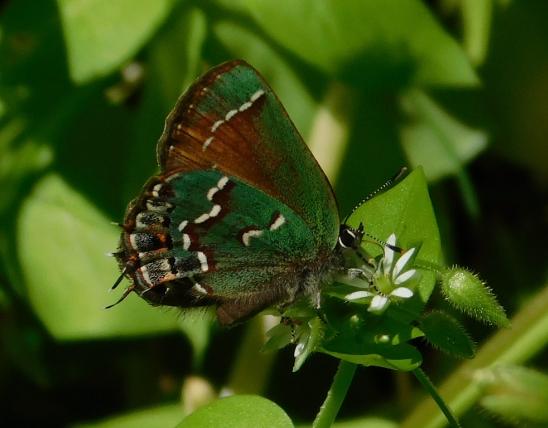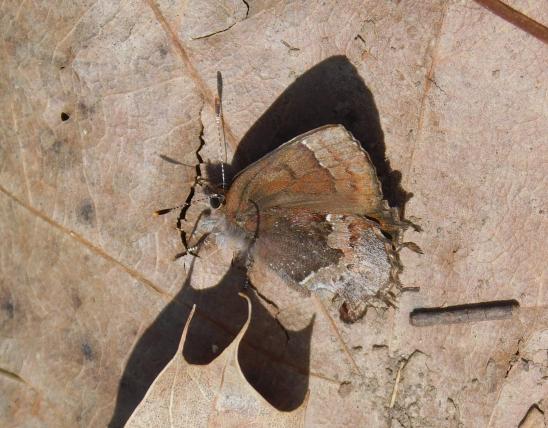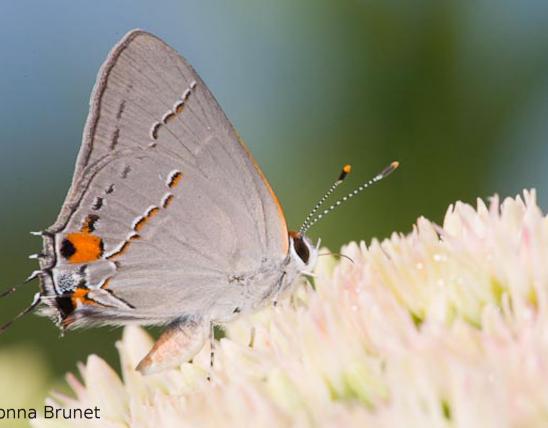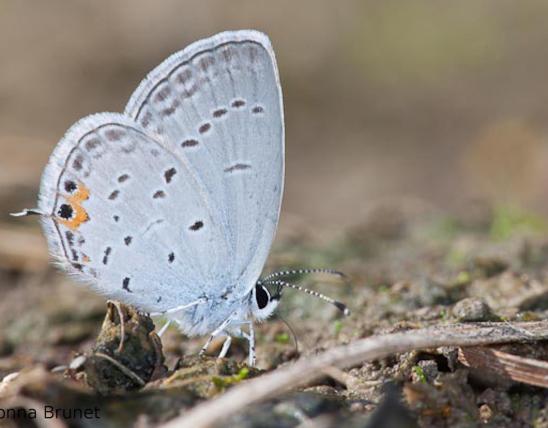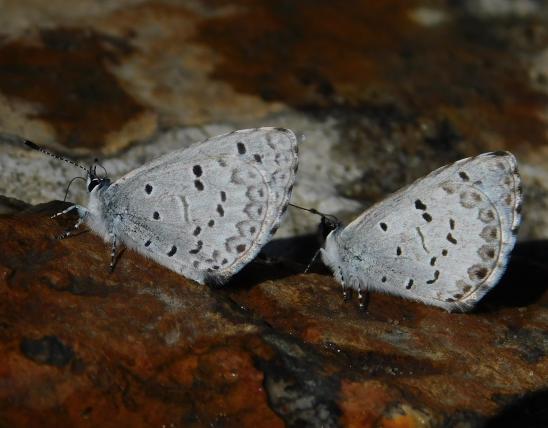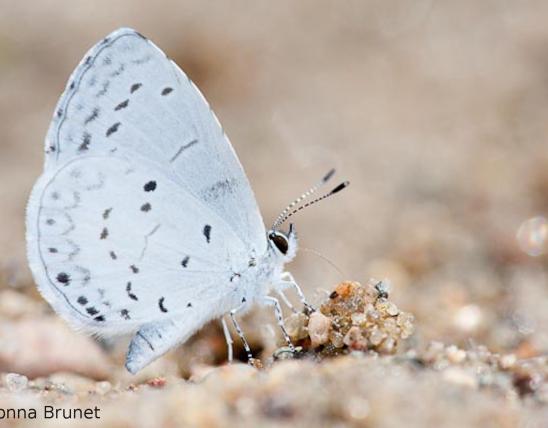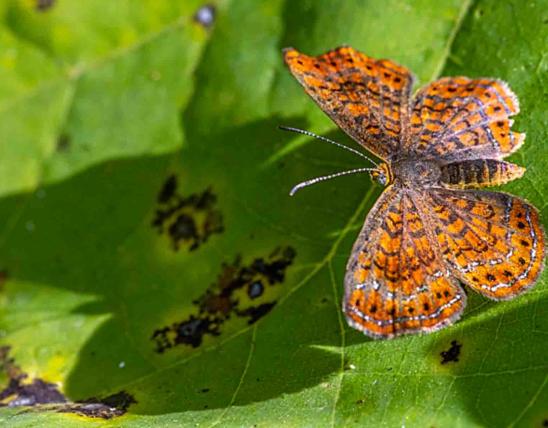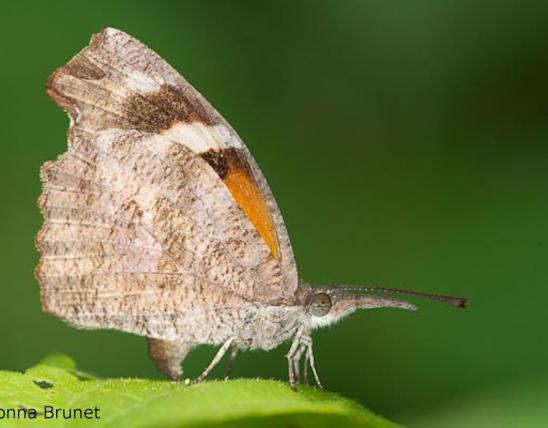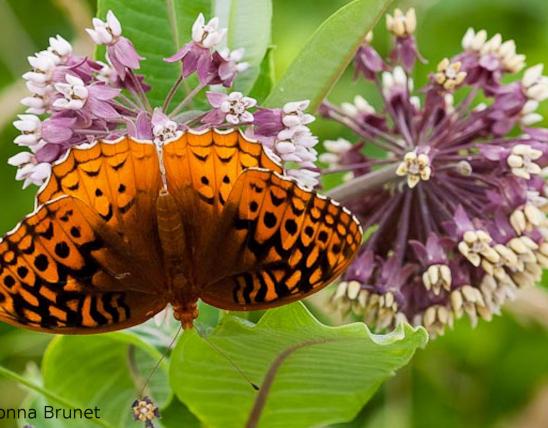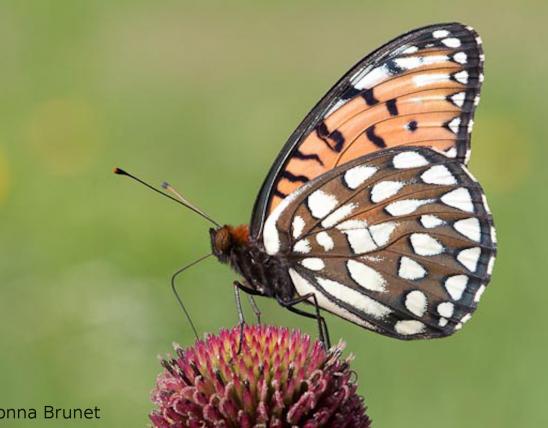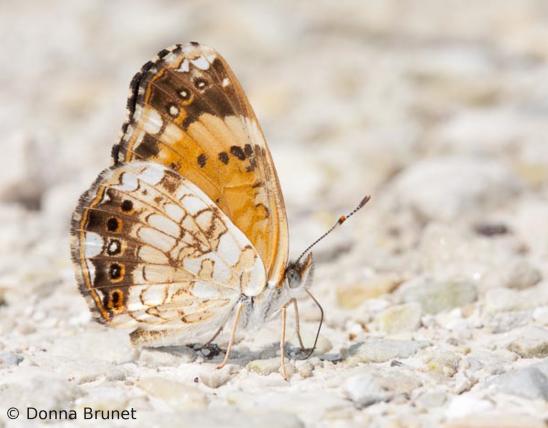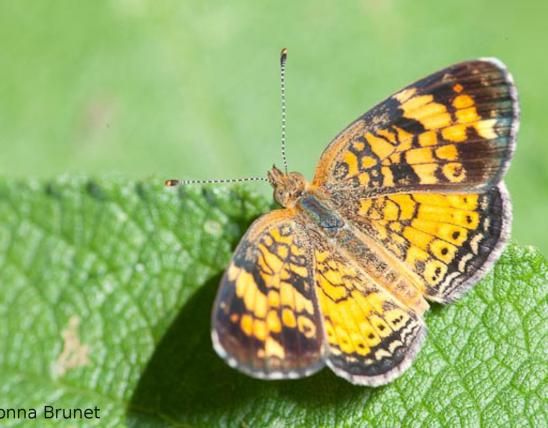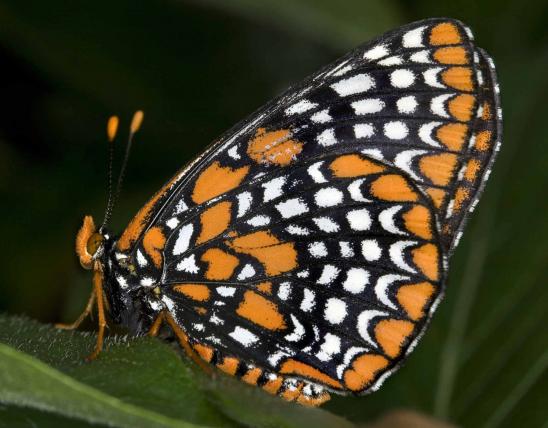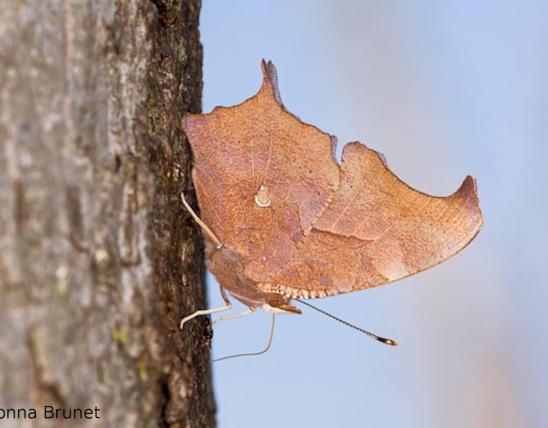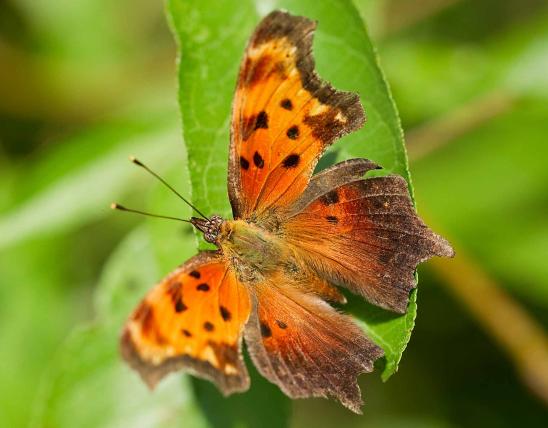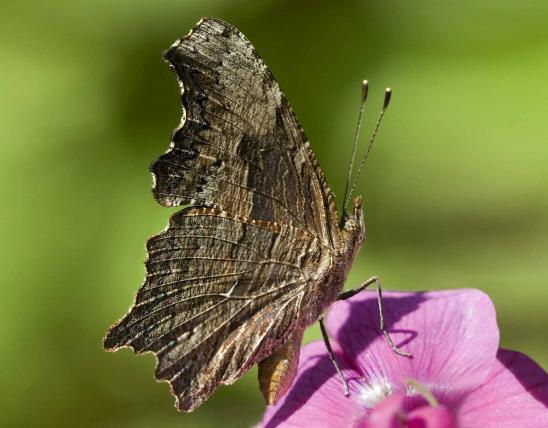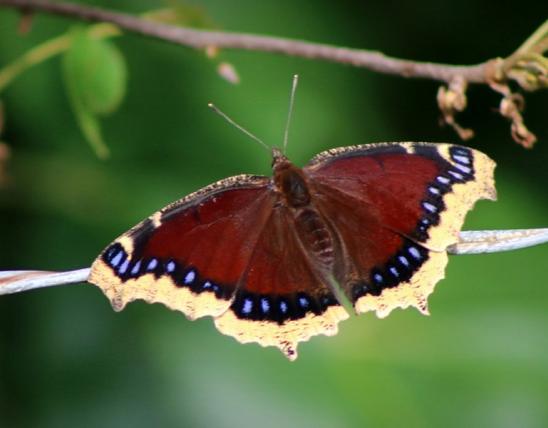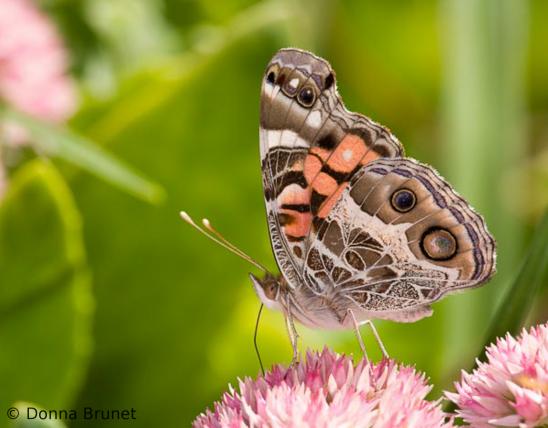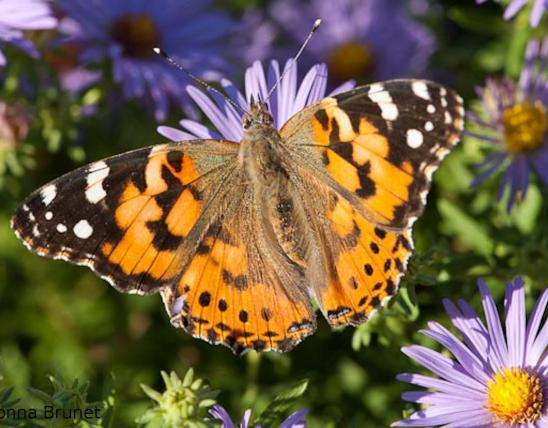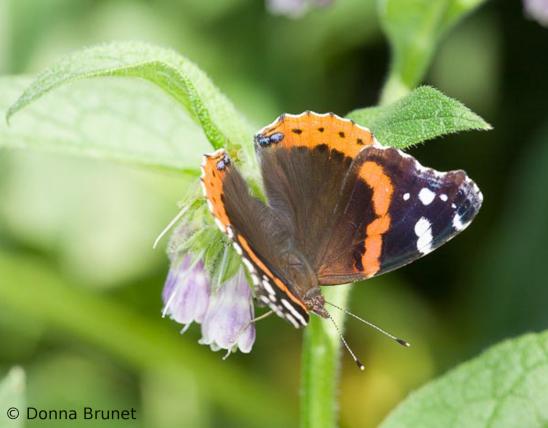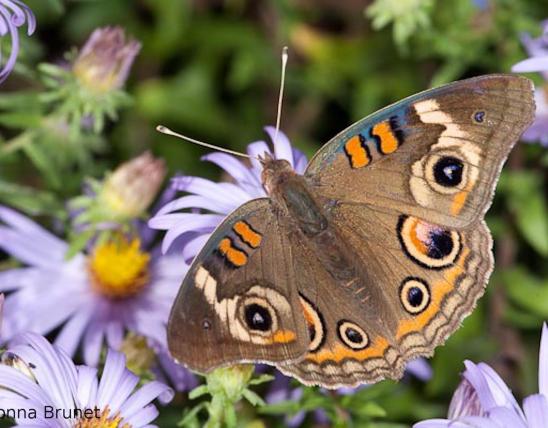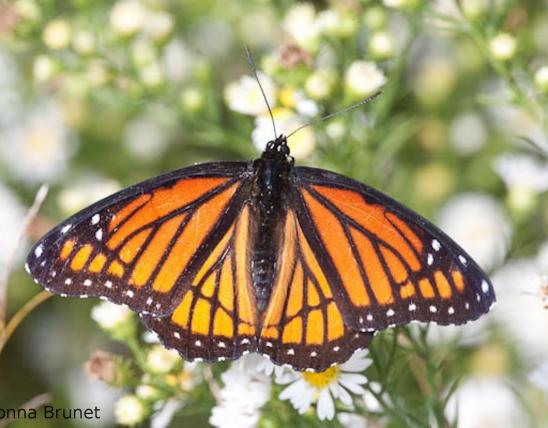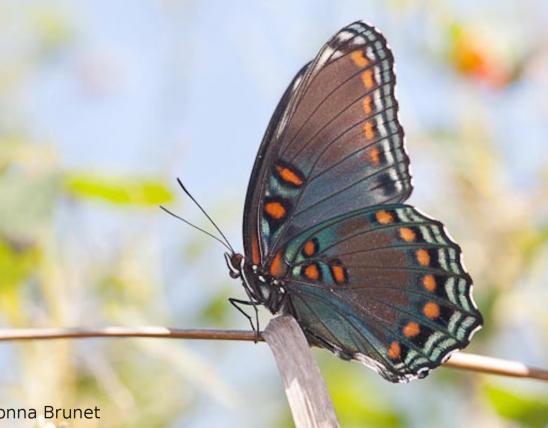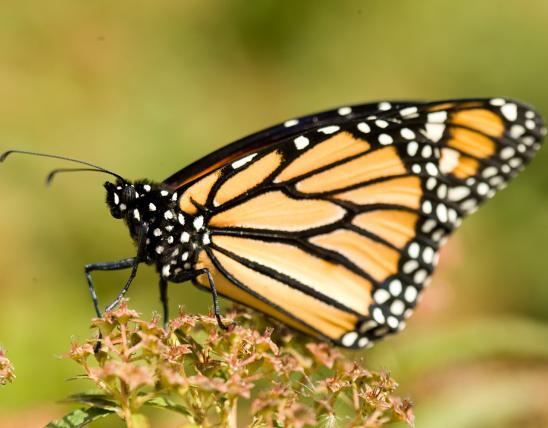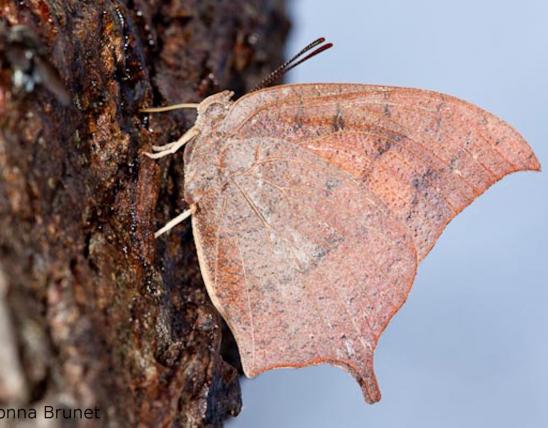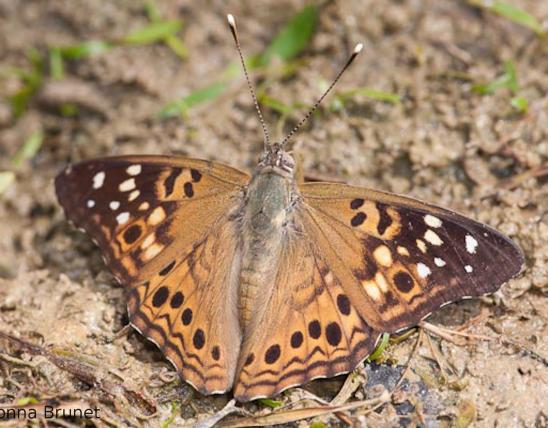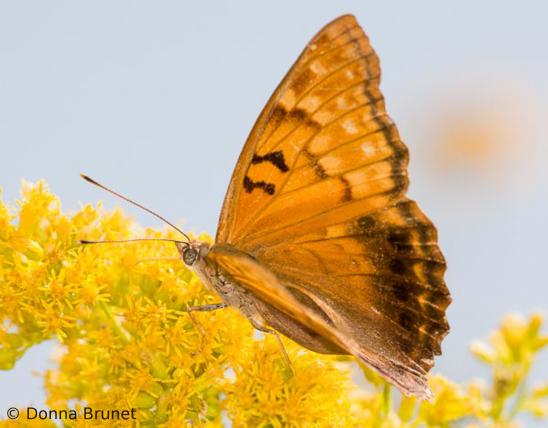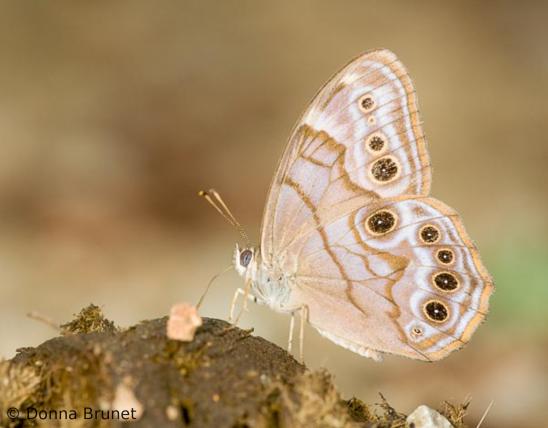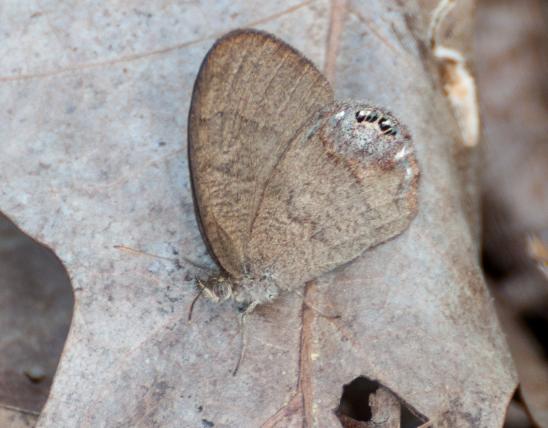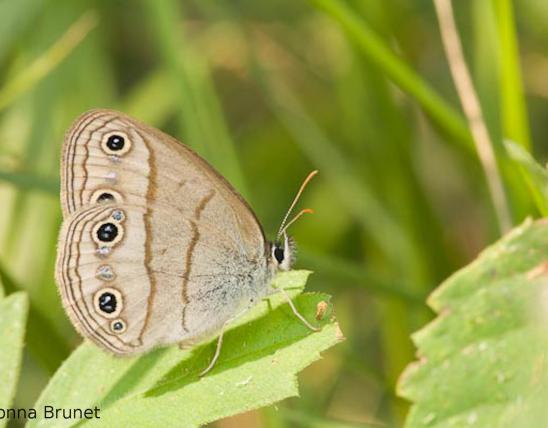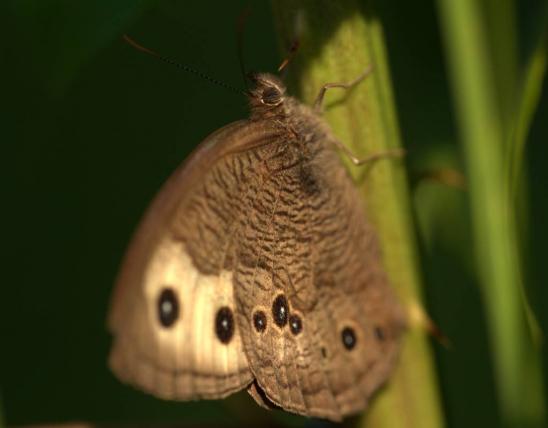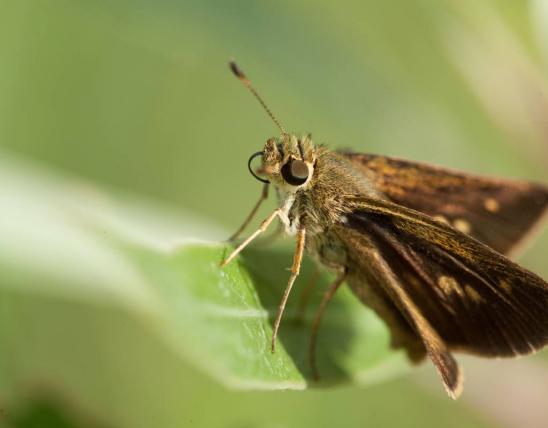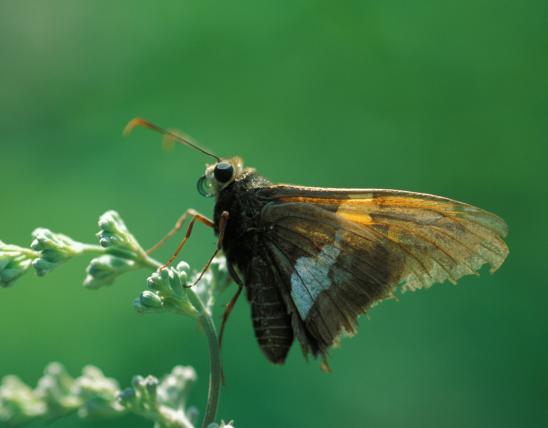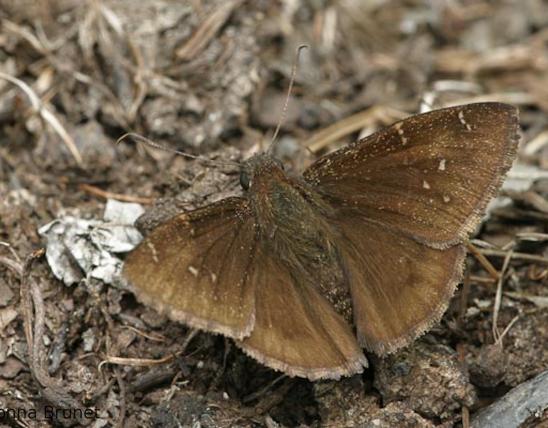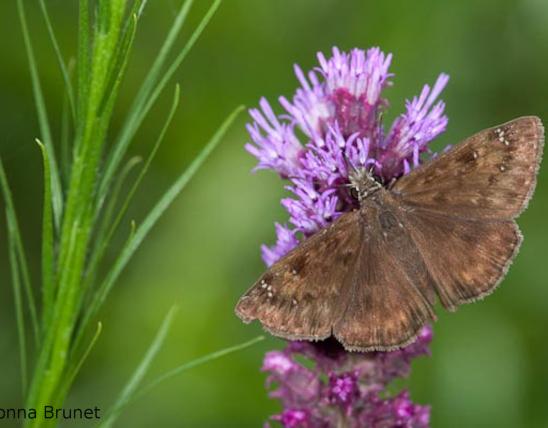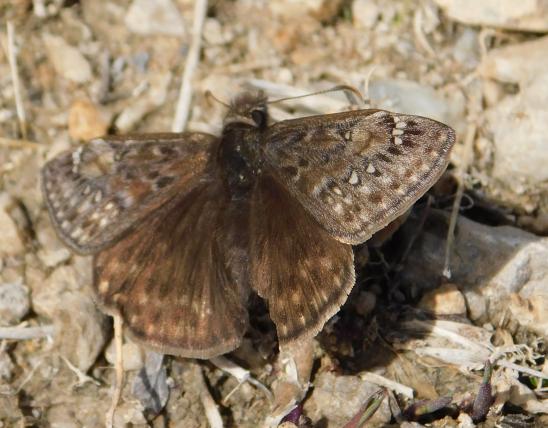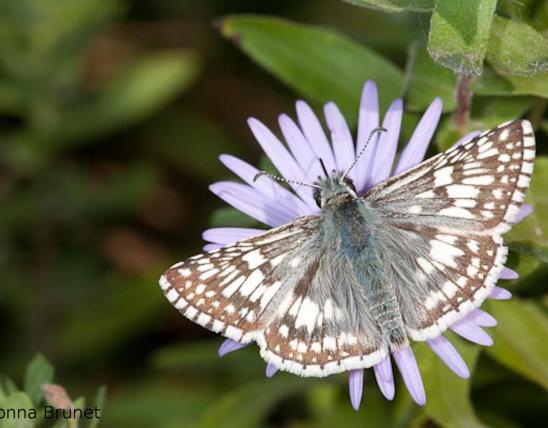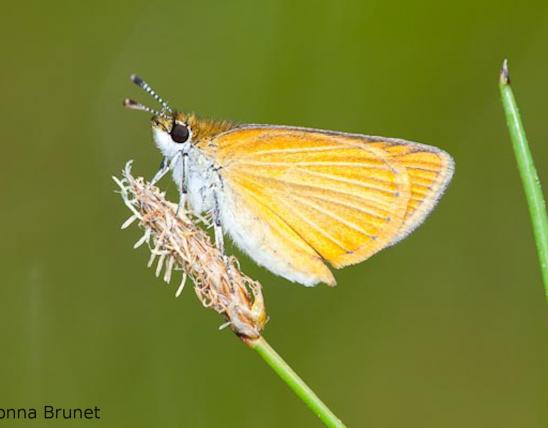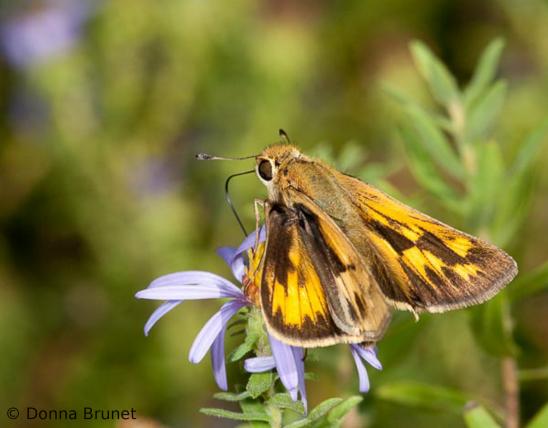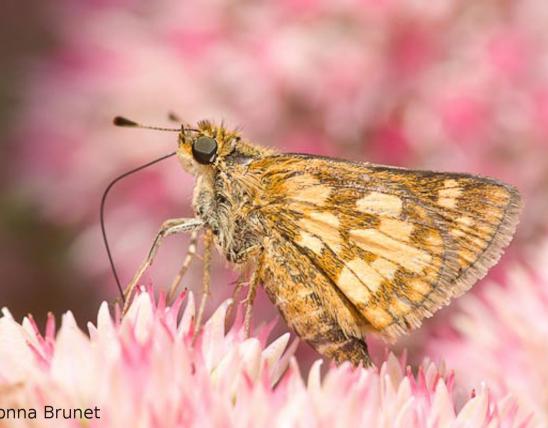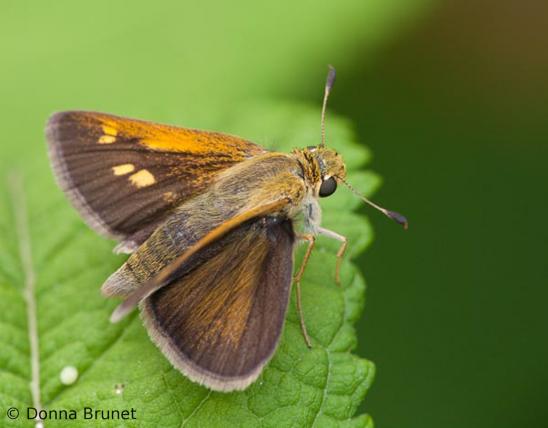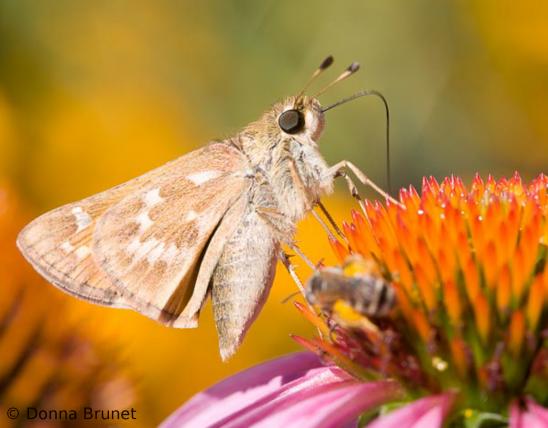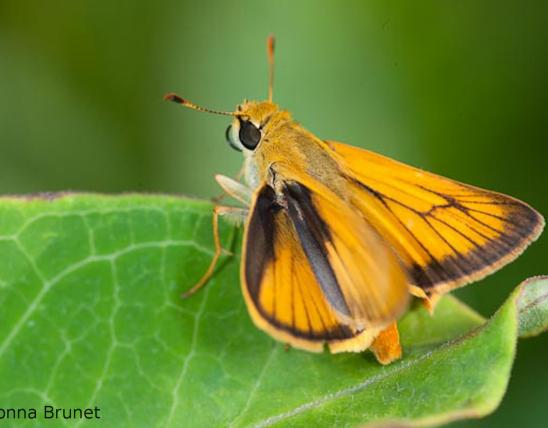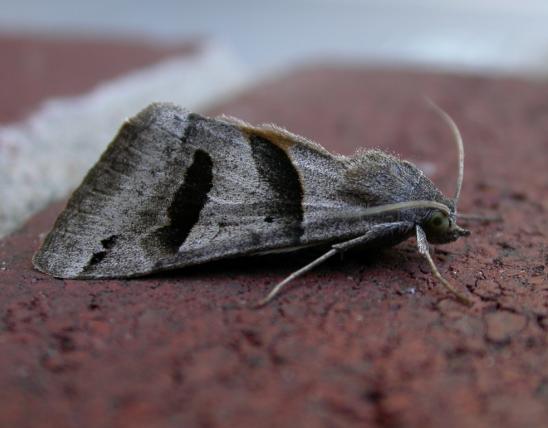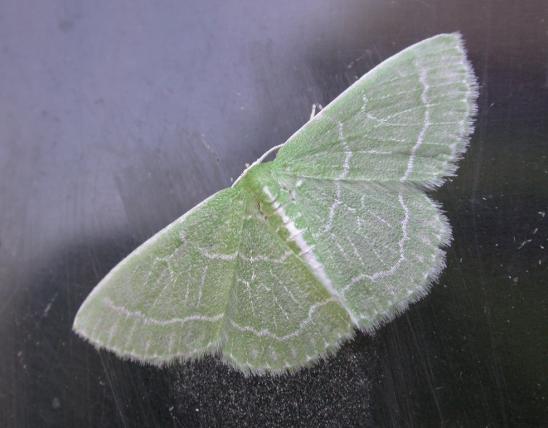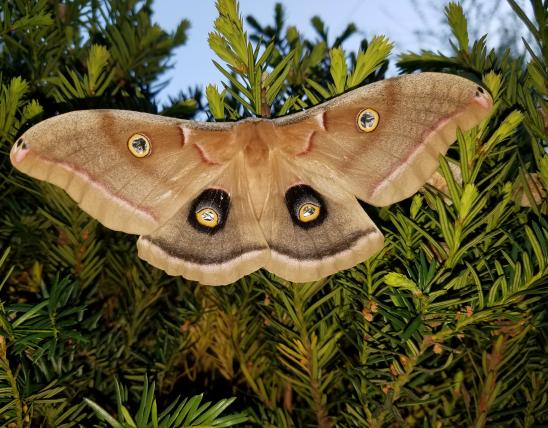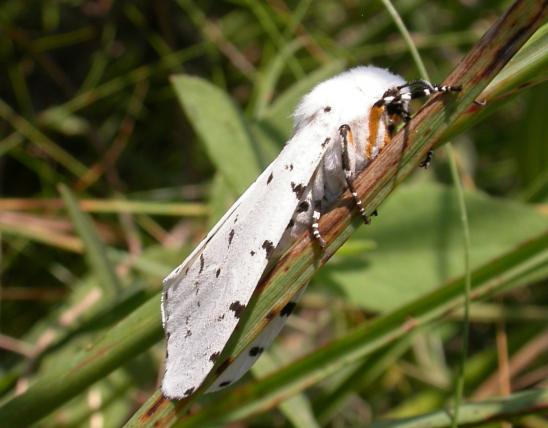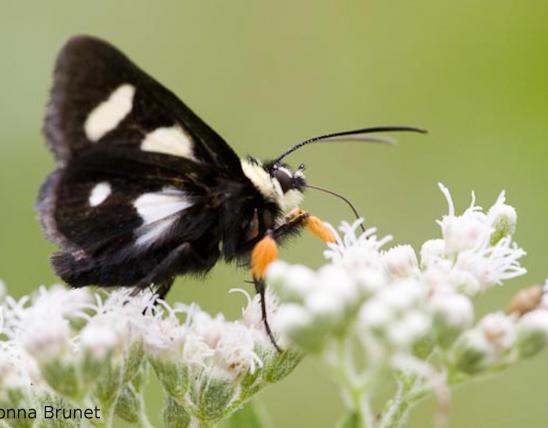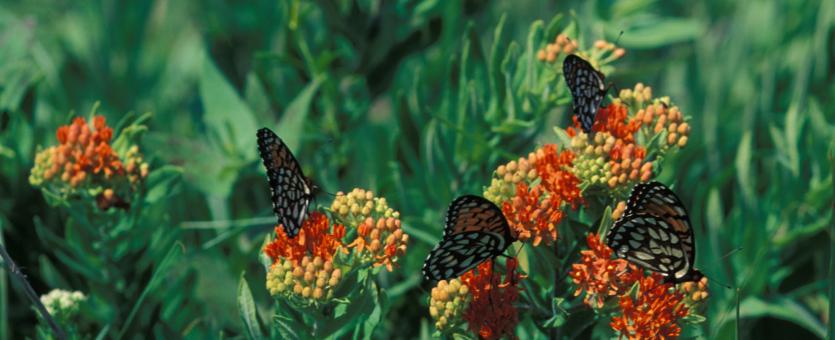
In North America, the Lepidoptera — the insect order comprising all the moths and butterflies — contains more than 30 superfamilies. All of them are various types of moths, except for one: superfamily Papilionoidea, which comprises the butterflies and skippers. Like moths, they have tiny, overlapping scales on their wings. These seem like dust when they rub off onto your fingers. The scales can be brightly colored, or they can be drab.
About 700 species of butterflies (including the skippers) occur in North America north of Mexico. Most of us have a general idea of what a butterfly looks like, but to be certain, note the following characteristics:
- Antennae, in butterflies, are filaments tipped with a club. In the skipper family of butterflies, the antennae tips are also hooked. (Meanwhile, moths’ antennae are filaments with no club tip, or else they are shaped like feathers.)
- The typical wing position, when perched, is either straight out to the sides (“wings open”), or the wings are held together, straight up over the body. (There are exceptions, but moths typically fold their wings over their body like a tent, or hold them flat but swept back at an angle to the body, looking triangular from above.)
- During metamorphosis, the chrysalis of butterflies is usually attached to a plant or other object, and it is not enclosed in a cocoon. (Some species may use silk to fold a leaf together, then enter metamorphosis in the tentlike shelter.) (Moth pupae are often wrapped in a silk cocoon, frequently are positioned in leaf litter, and the cocoons often incorporate bits of leaves, twigs, etc.)
- When does it fly? Butterflies are usually active during daylight hours. Some species are most active at dusk and dawn. (Most moths are nocturnal, but there are exceptions.)
- Butterflies often have relatively thinner bodies than moths, though members of the skipper family of butterflies have thicker, mothlike bodies.
- The larvae (caterpillars) of butterflies are rarely considered destructive pests, although there are exceptions. (The larvae of several kinds of moths are agricultural and other pests.)
- Coloration varies greatly, but many butterflies are more colorful than average moths. (There are plenty of exceptions, however!)
- For in-depth identification, it can help to learn the names of a butterfly’s body parts, including the various regions of the wings (dorsal and ventral, as well as basal, median, postmedian, submarginal, marginal, costal, apical, subapical, and so on).
Missouri’s Butterfly Families
There have been different ways of grouping the butterflies into families. The overview of Missouri’s butterflies, below, follows one system currently in use.
- Skippers (family Hesperiidae) Small to medium butterflies, fairly drab colored or orangish, usually with relatively large eyes, short antennae with hooked tips, and chunky body. They are named for their skipping flight. Missouri’s skippers can be divided into two groups: spread-wing skippers and grass skippers.
- Spread-wing skippers typically rest with wings flat and spread to the side; this group includes the silver-spotted skipper; the cloudywing, duskywing, and sootywing species; and the common checkered-skipper — plus others.
- Grass skippers typically rest with hindwings held flat, parallel to the ground, and forewings positioned upright in a V shape — they look like tiny fighter jets. Missouri’s grass skippers include the Delaware, least, Peck’s, fiery, tawny-edged, and sachem skippers, and several more.
- Swallowtails (family Papilionidae) Medium to large butterflies, often showy and brightly colored, most with tails on the hindwings. Many are black with blue, yellow, and red markings, or are white or yellow with wide black stripes. Identification usually involves details of stripes and spots. Swallowtail larvae have a Y-shaped organ that protrudes from behind the head when the larva is disturbed. It emits a foul odor that can deter enemies. The chrysalis is suspended by a silken loop around the thorax and by a spot of silk at the tip of the abdomen.
- Examples include black, eastern tiger, spicebush, giant, and zebra swallowtails.
- Whites, Sulphurs, and Yellows (family Pieridae) Small to medium butterflies that are mainly white, yellow, or orange, often with dark patterns such as a black border. They usually rest with wings closed, so only the underside of the wings is visible. Identification involves overall color plus lines, spots, and mottling on wings. Caterpillar host plants are usually in the mustard and cabbage family, although for sulphurs it’s usually the bean and pea family.
- Among the whites, Missouri species include the checkered white, cabbage white, Olympia white, and falcate orangetip.
- Among the sulphurs, Missouri has the clouded, cloudless, orange, and dainty sulphurs, the southern dogface, the sleepy orange, the little and Mexican yellows, and more.
- Blues, Coppers, Hairstreaks, and Harvesters (family Lycaenidae) Usually small butterflies, usually blue or gray, often with banded antennae. Identification usually involves spots or lines on the underside of wings, and presence or absence of tails. Larvae are sluglike (short and rather flattened). Many species gather in large numbers at puddles.
- Blues can be tiny with reflective blue on the upperside.
- Coppers are similar but with reflective copper color.
- Hairstreaks are usually gray or tan but have ornate (“hair”) streaks on the underside and have slender antenna-like tails on the hindwings.
- The one harvester species on our continent is a small orangish butterfly whose caterpillars prey on woolly aphids.
- Brush-Footed Butterflies (family Nymphalidae) Small, medium, and large butterflies; a large, colorful, and diverse group. In many species, the main upperside color is orange, brown, or black. In this family of butterflies, the first pair of legs are small, brushlike, and held against the body, so they perch and walk only with their back two pairs of legs, making them appear four-legged. Identifying species within this group usually involves noticing jagged or smooth wing margins, eyespots, dark patterning, and presence of white or silver spots on the underside.
- Many familiar butterflies are in this family: the monarch, fritillaries, checkerspots, crescents, anglewings (commas, question mark), leafwings, mourning cloak, buckeye, red admiral, ladies, red-spotted purple, viceroy, American snout, the emperors, and satyrs and wood-nymphs. In the past, the subfamilies of this large family have been treated as separate families.
- Metalmarks (family Riodinidae) Small butterflies, usually bright rusty-brown, with numerous small metallic spots on the wings. Their eyes are blue green. Larvae are covered with dense fuzzy hairs. Not well represented in Missouri; the northern metalmark and swamp metalmark both usually occur only in the Ozarks. Adults fly low to the ground and often rest on the undersides of leaves, wings spread flat.
Statewide. Different butterflies occur in different habitats, which usually correspond to the locations of their larval food plants.
Habitat and Conservation
Where do you find butterflies? Nearly anywhere, but here are some hints:
- Butterflies typically fly near their host plants — the specific types of plants a species must lay eggs on, because their caterpillars can only eat that certain type of plant. Cabbage butterflies, for instance, lay eggs on cabbage and other members of the mustard family. Look for males perching or patrolling near the host plants, awaiting females to fly near.
- Butterflies are often seen at nectaring or puddling sites: amid flowers, where they obtain nectar, or on mud, wet sand, or other damp ground where they obtain moisture and nutrients. Many butterflies visit rotting fruit, tree trunks where sap is oozing out, animal dung, or carrion for moisture and nutrients, too.
Butterfly conservation involves the same issues as many other animals, chiefly centering around habitat disruption and loss. While many butterflies can live on a wide variety of plant hosts, others can only survive on very particular plant species, which occur in specific native habitats, such as high-quality tallgrass prairie. Another factor is the number of broods: some butterflies lay eggs all spring, summer, and fall, while other species never produce more than a single brood each year. Also, as with other insects, butterflies can be killed by indiscriminate use of pesticides. Another issue involves migratory butterflies, such as the monarch, whose survival depends on having appropriate food plants and nectar sources in all the places they must travel through.
Food
If you really get into butterflies and skippers, then you will end up learning basic plant identification. Different butterfly species have their own host plants, which the caterpillars must eat in order to survive. A famous example is the monarch, which lays eggs on milkweeds, and the caterpillars eat the milkweed leaves and flowers.
Butterfly guidebooks usually include comments on caterpillar host plants. Many species have their larval food plants built into the name, such as the hackberry emperor and spicebush swallowtail. Some other host plant associations include:
- The larvae of various fritillary species eat violets.
- The Phaon crescent’s larvae eat northern fog fruit.
- The red admiral’s larvae eat various types of nettles.
- The host plants for satyrs, pearly-eyes, and wood-nymphs are usually different kinds of grasses.
- The zebra swallowtail’s larvae eat pawpaw leaves.
As adults, many butterflies don’t live very long. Nearly all their growth occurs when they are caterpillars. The adults, therefore, generally only need moisture and nutrients to keep them going: nectar, rotting fruit, or tree sap, for sugar and energy; salts and other minerals from mud puddles, damp stream banks, animal dung, and carrion. Different species focus on different nutrition sources. Some butterflies do not visit flowers.
Status
Several Missouri butterflies and skippers are listed as Species of Conservation Concern, including the regal and Diana fritillaries, northern and swamp metalmarks, Appalachian eyed brown, Ozark woodland swallowtail, Linda’s roadside skipper, Duke’s skipper, and Ottoe skipper. Habitat loss, degradation, and fragmentation are the primary issues.
Life Cycle
Butterflies, like beetles, bees, and flies, undergo complete metamorphosis: after a series of wormlike juvenile (larval) stages, they enter an inactive phase called a pupa, then emerge as sexually mature, winged adults. (Other insects, such as grasshoppers and true bugs, have juvenile stages that look more or less like the adult form, only smaller and minus the wings — their life cycle is called incomplete metamorphosis.)
Butterflies begin life as eggs that are typically laid on or near the host plant. The larvae (caterpillars) hatch from the eggs and begin eating and growing. As they grow, caterpillars repeatedly molt into larger exoskeletons (“skins”). Each stage is called an instar. Most butterfly caterpillars have four or five instars, and sometimes these can look different with each molt.
The final juvenile stage is the pupa, which in butterflies is called a chrysalis. The chrysalis hangs from the tip by a silk pad, with hooks at the tip of the abdomen gripping the silk. Swallowtails, whites, and sulphurs also spin a silken sling that surrounds the chrysalis for additional support. Skippers often spin silk onto a leaf, causing it to fold over, then the pupa is attached inside this little shelter. The chrysalis of many butterfly species starts off green, then turns brown, especially if this is the stage in which they overwinter.
Different butterfly species overwinter at different points in the life cycle: some overwinter as eggs, some at different points in the caterpillar development, and some as the chrysalis. A few overwinter in sheltered places as mature, winged adults.
Human Connections
People love butterflies. They’re beautiful, and they delight us in ways other insects do not. They figure into poetry, song, literature, art, philosophy, religion, and more. If you love butterflies, there are many ways to increase your enjoyment:
- Butterfly gardening: Plant native species that are eaten by butterfly caterpillars, and plant flowers that provide nectar for butterflies.
- Butterfly watching: it’s a real thing, and a lot like bird watching; plenty of information is online.
- Rearing caterpillars: you’ll need to set up your enclosure carefully and make sure the larvae have appropriate moisture and the correct food plants. You can find instructions online. Kids love this activity!
- Butterfly photography is challenging and rewarding. It becomes a sort of sport.
- Collecting butterflies: decades ago, this was more popular, but many people today are not so interested in capturing, killing, and pinning specimens, and recording the many detailed field notes that make the collections scientifically meaningful. Still, many serious amateurs do this.
- Butterfly organizations: there are several you can join, increasing your knowledge while having fun with friends.
- “Citizen science” opportunities: participate in groups like Monarch Watch, a tagging program that helps scientists better understand monarch populations and habitats. Another program, at Iowa State University, encourages people to report sightings of red admirals and painted ladies, which, like the monarch, are also migratory.
- Certain butterfly species that overwinter as adults may benefit from “butterfly houses,” which have narrow vertical openings where butterflies can take shelter.
- Finally, learn about conservation issues and play a role in helping Missouri’s native habitats and species.
Ecosystem Connections
Many butterflies play important roles as flower pollinators, but most of the feeding in a butterfly’s life is done in the caterpillar stage. Nearly all butterfly caterpillars are herbivores, eating leaves, stems, flowers, fruits, and other parts of plants.
Butterflies play an important role early in the food chain, converting nutrients from plants into their own bodies, which then become food for other animals. Usually, only a small fraction of butterfly eggs survive to become adult butterflies.
A wide variety of predators are ready to consume a butterfly during all stages of its life — egg, caterpillar, chrysalis, and adult. Butterfly predators include spiders, predaceous insects, fish, amphibians, reptiles, mammals, and birds.
Butterflies are also eaten by parasitoids. Parasitoid insects are usually wasps or flies that lay their eggs on (or in) butterfly eggs or caterpillars; the parasitoid larvae hatch and eat the caterpillar from within.
Elaborate camouflage, and deceptive eyespots, false antennae, and warning colors are ways that butterflies deter or deflect their predators.
Several types of butterflies eat toxic plants as caterpillars and therefore become toxic themselves. These species typically have distinctive bright colors, which predators — sickened once or twice — learn to avoid. Monarchs, which eat milkweeds, are an example. Then, other species, which may not be toxic at all, can have colors that mimic the toxic species, and gain some protection from “educated” predators. Warning systems can develop in which a number of toxic, distasteful, or perfectly edible species develop the same warning coloration. For example, several swallowtails in Missouri mimic the black coloration of the acrid-tasting pipevine swallowtail.
